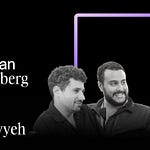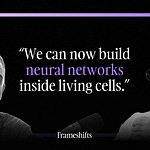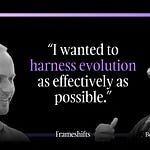What happens when the man who launched commercial spaceflight decides humanity needs to stop aging?
Peter Diamandis is building the infrastructure to tackle aging. He founded the XPRIZE Foundation, created Singularity University with Larry Page and Ray Kurzweil, and wrote the playbook on exponential thinking with Abundance and Bold. However, somewhere between flying Stephen Hawking into zero gravity and recruiting Elon Musk to his board, he realized something: if we’re building an unlimited future, we need to be around to see it.
We talk about why Peter walked away from space (his first love) to focus on longevity. He shares his story on how he raised $101 million for the XPRIZE Healthspan, the largest incentive prize he’s ever launched, and why 730 teams are now racing to reverse functional aging by 2030. Peter also talks about what it means to restore cognition, immune function, and muscle capacity to what you had 20 years ago, measurably and reproducibly.
We also get into the economics of abundance where Peter states that artificial intelligence, the most powerful technology in human history, is becoming free for 8 billion people. Intelligence as a service is demonetizing at 79% per year. Ultimately, are we heading toward Star Trek (exploring the universe with godlike capabilities) or WALL-E (sitting back while robots feed us grapes)?
Key Takeaways:
XPRIZE Healthspan: $101M prize with three targets: reverse cognitive decline, immune exhaustion, and sarcopenia. Winner announced by 2030.
The six D’s of exponentials: Digitize → Dematerialize → Demonetize → Democratize → Deceptive → Disruptive. Every industry that touches ones and zeros follows this curve.
Why biotech is broken: Wall Street stopped valuing potential and started demanding revenue. Peter thinks high-fidelity AI cell models (the biology equivalent of physics-based simulations of SpaceX’s Falcon 9) could restore confidence before Phase 3 trials.
Healthcare will be free: AI diagnosticians already outperform human doctors (92% vs 72% accuracy). Data collection will be ambient: sensors in your watch, ring, breath, typing patterns. Companies will pay to keep you healthy because catching disease early is cheaper than treating it late.
The cost curves: Full-body MRI machines that don’t need helium cooling, cost $200K instead of $2M, and scan in 10 minutes instead of 90. Genome sequencing headed toward free. Grail’s multi-cancer detection becoming a volume play.
Why Moore’s Law mattered more than anyone realized: In 1958, Gordon Moore noticed transistors per dollar doubled every 12-18 months. That gave us 60+ years of predictable exponential compute. Everything else, including AI, biotech, and nanotech, runs on top of that curve.
The transition from space to longevity: Peter realized rockets and satellites were incremental, but if AI, 3D printing, and nanotech go exponential, space becomes easy downstream. So he went deep into the enabling technologies first.
What “solving everything” looks like: Enough compute, enough algorithms, enough data to uncover the secrets of math, physics, chemistry, biology. Imagine what happens when every day you wake up to a scientific breakthrough?
This is one of those conversations where you realize the future isn’t decades away, it’s deceptively close. The tools exist, the compute exists and intelligence is free. The only question is whether you’ll build something with it, or watch from the sidelines.
And in case you’re short on time, here’s a quick teaser:
Watch on Youtube; listen on Apple Podcasts or Spotify.
GUEST INFORMATION:
Peter Diamandis - Founder of XPRIZE, Singularity University, Bold Capital Partners
Upcoming Books: We Are As Gods: A Survival Guide in the Age of Abundance
Moonshots Podcast: Weekly discussions on exponential technologies
CONNECT WITH US:









